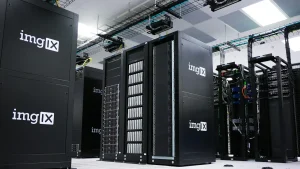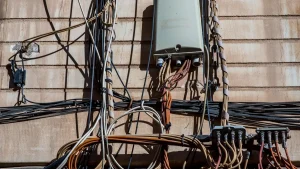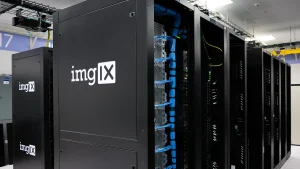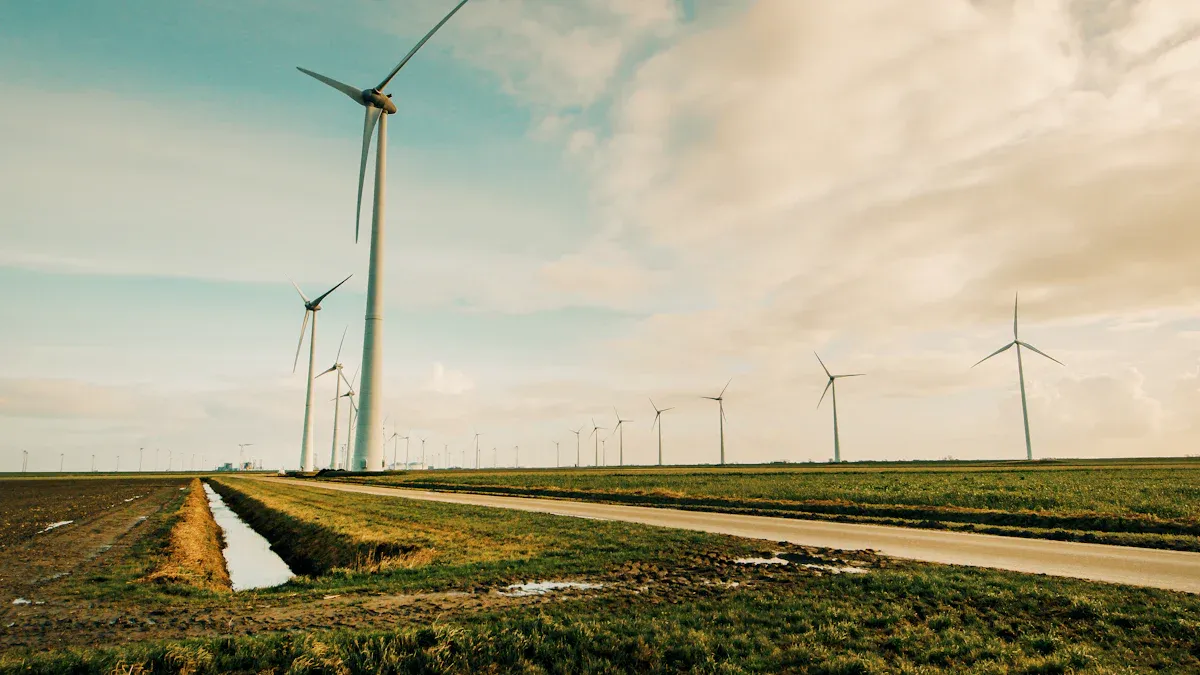
Power Distribution Units (PDUs) are essential components in renewable energy systems. These devices manage and distribute electrical power efficiently across various connected components. Their role becomes critical in solar and wind energy systems, where they ensure stable voltage and frequency regulation. The increasing adoption of renewable energy sources highlights their importance. For instance:
- PDUs enable seamless integration of solar and wind power into existing grids.
- They optimize energy efficiency while reducing operational costs.
The rise of smart technologies further amplifies the demand for PDUs, especially in systems incorporating IoT and cloud-based solutions.
Key Takeaways
- Power Distribution Units (PDUs) help control and share electricity in renewable energy systems. They keep the system steady and working well.
- Buying modern PDUs with tracking tools can improve energy use and lower problems in solar and wind systems.
- Picking a good PDU means checking its size, tracking features, and strength to work well in renewable energy setups.
Understanding Power Distribution Units
What Are Power Distribution Units?
Power Distribution Units (PDUs) are devices designed to distribute electrical power efficiently across multiple connected systems or components. They play a pivotal role in ensuring the seamless operation of renewable energy systems, such as solar and wind setups. By managing power flow, PDUs help maintain system stability and prevent overloads, which could lead to costly downtime or equipment damage.
Modern PDUs incorporate advanced features that enhance their functionality. For example:
- Surge protection safeguards connected devices from voltage spikes.
- Monitoring capabilities provide real-time insights into power usage, enabling proactive maintenance.
Tip: Investing in PDUs with monitoring features can significantly reduce operational risks and improve energy efficiency.
The importance of PDUs extends beyond renewable energy systems. In industrial applications, they minimize the risk of failures and unexpected shutdowns. This reliability has contributed to the growth of the global Data Center Rack PDU Market, which was valued at USD 3.5 billion in 2023 and is projected to reach USD 8.7 billion by 2033, growing at a CAGR of 9.5% from 2025 to 2033.
Types of Power Distribution Units
PDUs come in various types, each tailored to specific needs and applications. Understanding these differences is crucial for selecting the right unit for renewable energy systems. Below is a breakdown of the main types:
| Type of PDU | Features | Data Collection Capability |
|---|---|---|
| Basic PDU | Distributes power to multiple outlets, similar to a power strip. | No data collection. |
| Metered PDU | Monitors load level locally with a built-in current meter. | Local monitoring only, no network connection. |
| Monitored PDU | Allows remote monitoring of voltage, power, frequency, and load levels. | Real-time data access via network connection. |
| Switched PDU | Enables remote control of individual outlets. | Full monitoring and control capabilities. |
Advanced PDUs, often referred to as intelligent PDUs, offer enhanced features such as remote management, environmental sensing, and energy efficiency optimization. These capabilities make them ideal for renewable energy systems, where precise control and monitoring are essential.
Key Features of Intelligent PDUs:
- Real-time monitoring of power usage.
- Remote control of outlets for improved operational efficiency.
- Data collection for capacity planning and issue identification.
Note: While intelligent PDUs are more expensive than basic models, their operational benefits often outweigh the initial investment.
The choice of PDU type depends on the specific requirements of the system. For instance, basic PDUs may suffice for small-scale setups, while intelligent PDUs are better suited for large-scale renewable energy installations.
Applications of Power Distribution Units in Renewable Energy
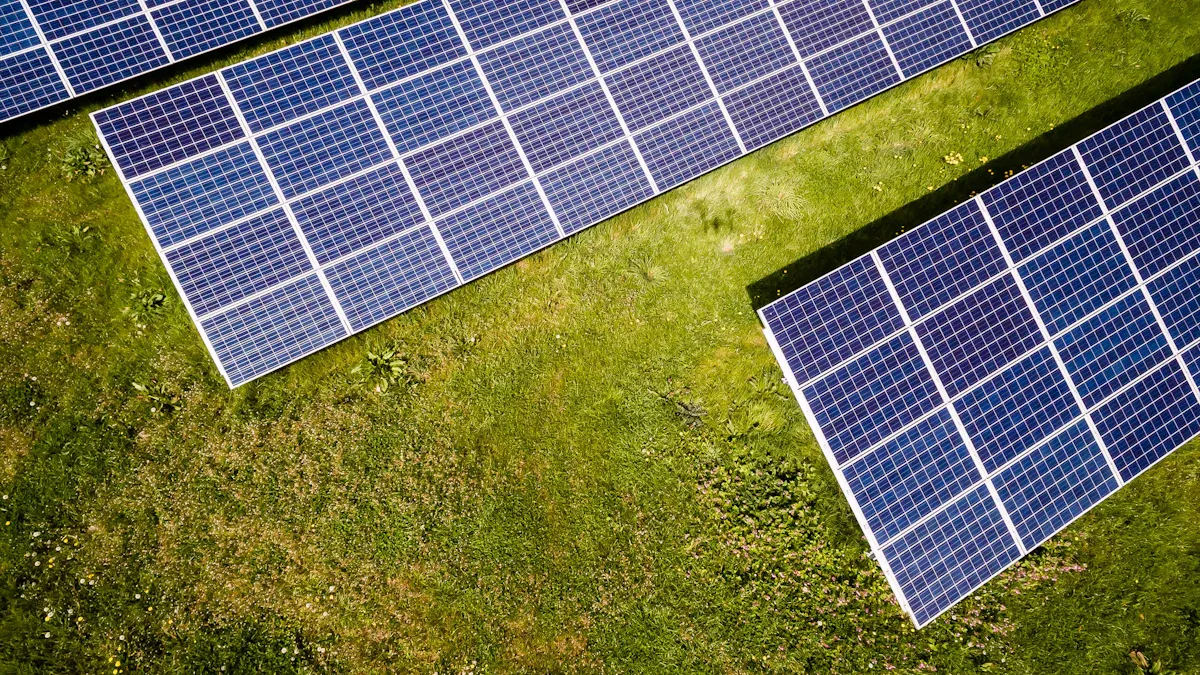
Solar Energy Systems
Power Distribution Units play a vital role in solar energy systems by ensuring efficient energy management and distribution. Solar panels generate electricity that must be routed to various components, such as inverters, batteries, and the grid. PDUs streamline this process by distributing power effectively while preventing overloads and energy losses.
Custom PDUs have demonstrated their ability to enhance solar energy system efficiency. For example:
- A solar energy company expanded its capacity by 30% within a year using tailored PDUs.
- Real-time monitoring features reduced energy waste by up to 20%, showcasing the importance of advanced PDUs in optimizing performance.
Modern PDUs also enable seamless integration with smart technologies. They provide real-time data on energy flow, allowing operators to identify inefficiencies and make informed decisions. This capability is particularly beneficial for large-scale solar farms, where even minor improvements in efficiency can lead to significant cost savings.
Wind Energy Systems
In wind energy systems, Power Distribution Units ensure the stable and efficient transfer of electricity generated by wind turbines. These systems often operate in remote locations, making reliability and resilience critical. PDUs help maintain consistent power flow, even during fluctuating wind conditions, by balancing loads and preventing system disruptions.
Advanced PDUs with monitoring and control features enhance the reliability of wind energy systems. Operators can remotely monitor power usage, detect anomalies, and address issues before they escalate. This proactive approach minimizes downtime and maximizes energy output.
A market report highlights the impact of PDUs on energy distribution in renewable systems:
| Metric | Value |
|---|---|
| Energy Savings Percentage | 15% to 25% |
| Average Data Center Power | 5 MW |
| Power Savings with PDU | 750 kW to 1.25 MW |
These figures underscore the efficiency gains achievable with PDUs, making them indispensable for wind energy applications.
Hybrid Solar and Wind Systems
Hybrid systems that combine solar and wind energy require sophisticated power management solutions. Power Distribution Units excel in these setups by coordinating the energy flow from multiple sources. They ensure that power is distributed efficiently, whether it originates from solar panels, wind turbines, or stored energy in batteries.
The integration of PDUs in hybrid systems enhances their adaptability and scalability. Intelligent PDUs, equipped with advanced monitoring capabilities, allow operators to track energy production and consumption in real time. This data-driven approach enables better decision-making and ensures optimal system performance.
Hybrid systems often face challenges related to variable energy generation. PDUs address these challenges by balancing loads and maintaining system stability. Their ability to integrate with IoT platforms further enhances their functionality, making them a cornerstone of modern renewable energy systems.
Benefits of Power Distribution Units in Solar/Wind Applications
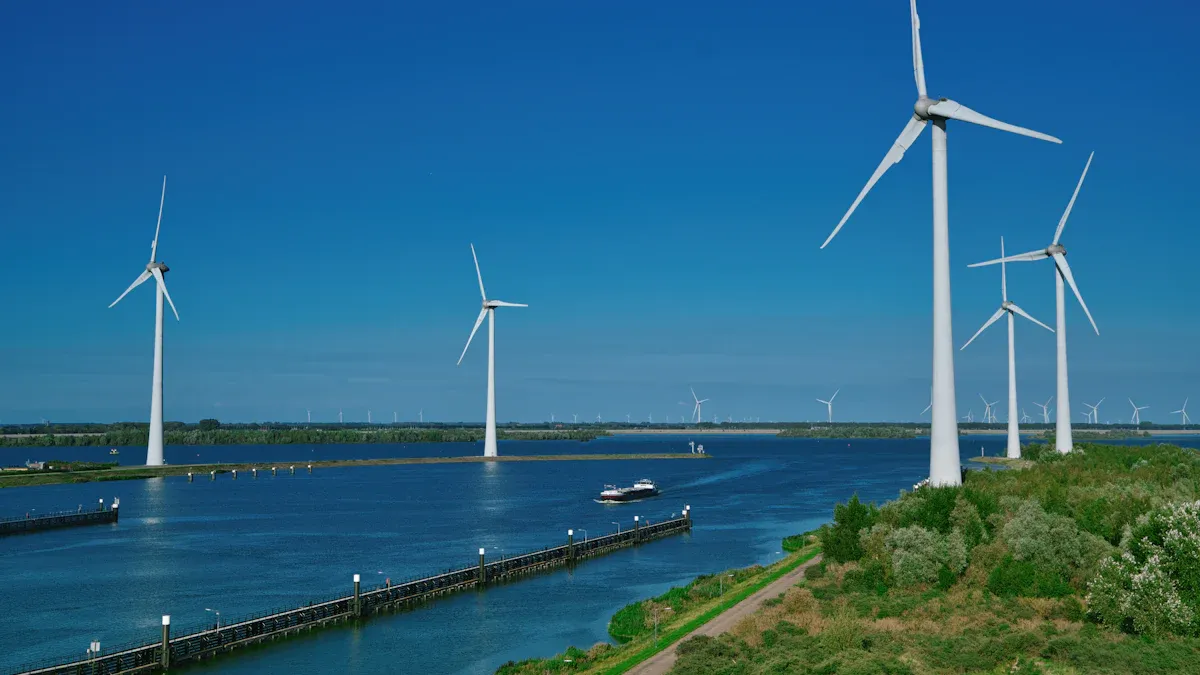
Energy Efficiency and Optimization
Power Distribution Units enhance energy efficiency by minimizing power losses during distribution. In renewable energy systems, they ensure that electricity generated by solar panels or wind turbines is delivered to connected components with minimal waste. Advanced PDUs incorporate features like automated load balancing, which optimizes energy flow based on demand. This capability reduces unnecessary energy consumption and improves overall system performance.
The shift toward sustainability has also influenced the design of PDUs. Modern units focus on energy efficiency and waste reduction, aligning with the growing demand for greener energy solutions. For example, DC power distribution systems integrated with renewable energy sources allow for direct electricity distribution, reducing energy losses typically associated with AC systems.
System Reliability and Resilience
Reliability is critical in solar and wind energy systems, where power generation can fluctuate due to environmental factors. Intelligent PDUs address this challenge by dynamically adjusting to changing load demands and optimizing power flow. Automated switching mechanisms ensure seamless transitions to backup power sources, enhancing system resilience.
- Intelligent PDUs provide granular control over power distribution, enabling operators to identify inefficiencies and implement targeted interventions.
- Advanced monitoring capabilities allow for real-time detection of anomalies, reducing the risk of system failures.
- Increased energy efficiency and reliability contribute to the overall resilience of renewable energy infrastructures.
These features make PDUs indispensable for maintaining stable and reliable operations in renewable energy systems, even under challenging conditions.
Advanced Monitoring and Control
Modern PDUs offer advanced monitoring and control features that significantly enhance system management. These capabilities include real-time monitoring of power parameters, remote outlet switching, and automated issue notifications. The table below highlights some key features:
| Feature | Description |
|---|---|
| Power Metering | Provides detailed energy consumption data to track usage trends and identify power-hungry devices. |
| Remote Outlet Switching | Allows for the remote toggling of power to specific devices, enhancing control and flexibility. |
| Real-time Monitoring | Continuously monitors power parameters like voltage and current, sending alerts for abnormalities. |
| Issue Notifications | Sends real-time alerts to operators in case of overloads or other potential issues. |
| Energy Efficiency | Helps reduce energy waste by powering off devices not in use, improving overall efficiency. |
These features empower operators to make data-driven decisions, ensuring optimal performance and reducing operational risks. By integrating advanced PDUs, renewable energy systems can achieve higher levels of efficiency, reliability, and control.
Choosing the Right Power Distribution Unit
Capacity and Scalability
Selecting a Power Distribution Unit (PDU) with the appropriate capacity is essential for renewable energy systems. The unit must handle current load demands while accommodating future expansions. Modular configurations in PDUs allow seamless scalability, enabling operators to expand systems without significant structural changes. For example, high-density PDUs adapt to evolving workloads, ensuring optimal performance even under demanding conditions.
| Rack Capacity | Required PDUs | Circuit Breakers |
|---|---|---|
| 50kW | 2x 63A | 2x 63A |
| 80kW | 3x 63A | 3x 63A |
| 100kW | 4x 63A | 4x 63A |
These configurations demonstrate how PDUs support diverse capacity needs. Additionally, real-time monitoring features enable adaptive power distribution, ensuring efficient energy use as load demands fluctuate. This scalability is particularly beneficial for hybrid renewable systems that integrate solar and wind energy sources.
Monitoring and Control Features
Advanced monitoring and control features enhance the functionality of PDUs in renewable energy setups. Real-time monitoring provides precise insights into energy consumption, ensuring high availability and reliability. Enhanced control capabilities allow operators to manage power loads effectively, reducing energy waste and optimizing performance.
| Feature | Description |
|---|---|
| Real-time Monitoring | Tracks energy usage with precision, ensuring system reliability. |
| Enhanced Control | Enables detailed management of power distribution. |
| Data Collection | Offers insights into energy costs and identifies potential savings. |
| Flexibility | Adapts to rapid changes in energy demands, accommodating evolving system requirements. |
These features empower operators to make data-driven decisions, improving system efficiency and reducing operational risks. PDUs with such capabilities are indispensable for modern renewable energy systems.
Environmental Durability
Renewable energy systems often operate in harsh environments, making durability a critical factor when choosing a PDU. Units designed for extreme conditions, such as high humidity or temperature fluctuations, ensure reliable performance. Features like corrosion-resistant materials and robust enclosures protect PDUs from environmental damage.
PDUs integrated with renewable systems also contribute to sustainability. High-density units facilitate the use of solar and wind energy, reducing reliance on non-renewable resources. This adaptability not only enhances system longevity but also aligns with global efforts to minimize environmental impact.
Power Distribution Units (PDUs) play a pivotal role in renewable energy systems by ensuring efficient power management, reliability, and scalability. Their advanced features optimize energy flow and enhance system resilience.
Tip: Evaluate capacity, monitoring capabilities, and environmental durability when selecting a PDU for solar or wind setups to maximize performance and longevity.
FAQ
What factors should be considered when selecting a PDU for renewable energy systems?
- Evaluate system capacity and scalability.
- Check for advanced monitoring and control features.
- Ensure environmental durability for harsh conditions.
Tip: Always match the PDU’s specifications with the system’s current and future energy demands.
How do PDUs improve energy efficiency in solar and wind systems?
PDUs optimize energy flow by balancing loads and reducing power losses. Intelligent PDUs also provide real-time monitoring, enabling operators to identify inefficiencies and minimize waste.
Are intelligent PDUs worth the investment for small-scale renewable setups?
Yes, intelligent PDUs offer long-term benefits. Their monitoring and control features enhance efficiency, reduce downtime, and provide scalability, making them valuable even for smaller installations.
Note: While upfront costs may be higher, operational savings often justify the expense.
